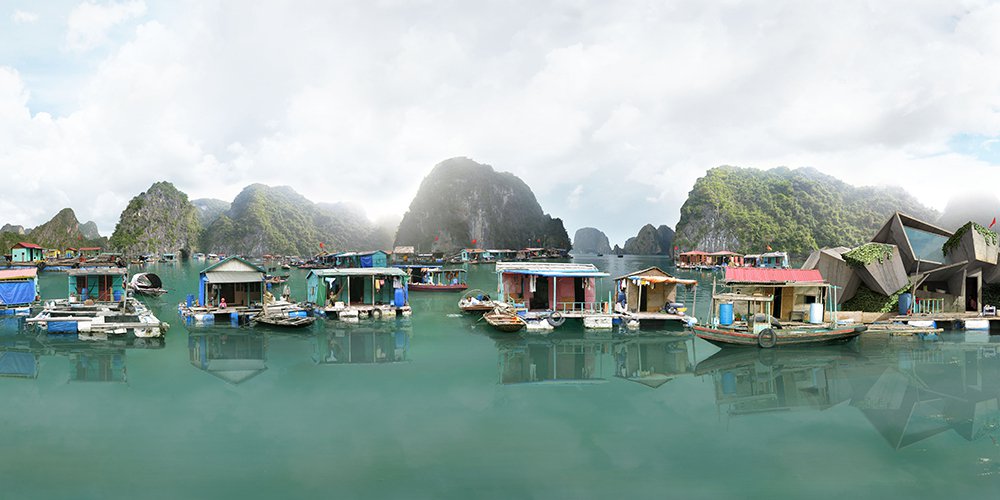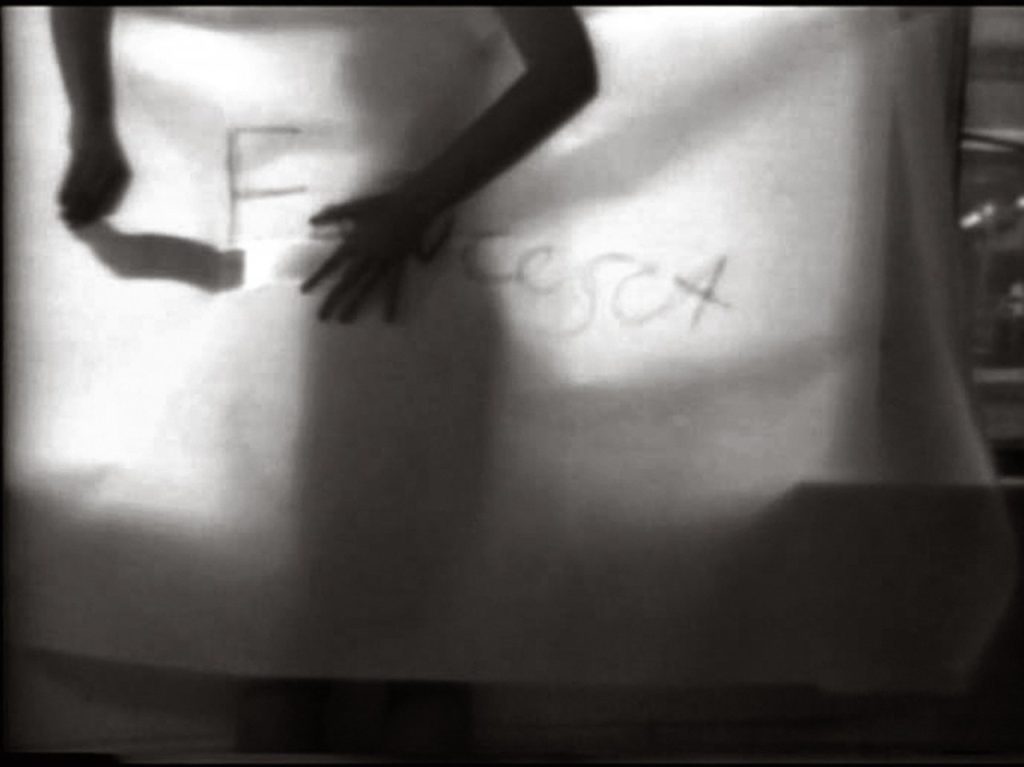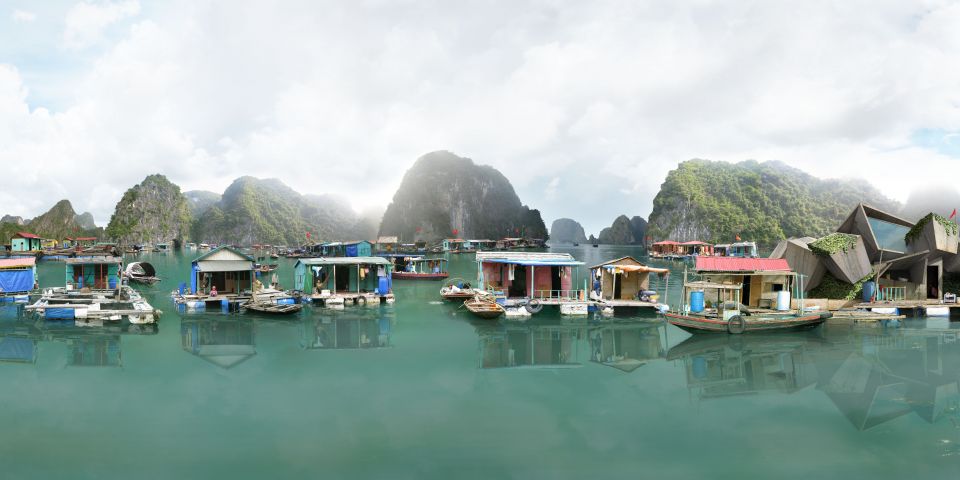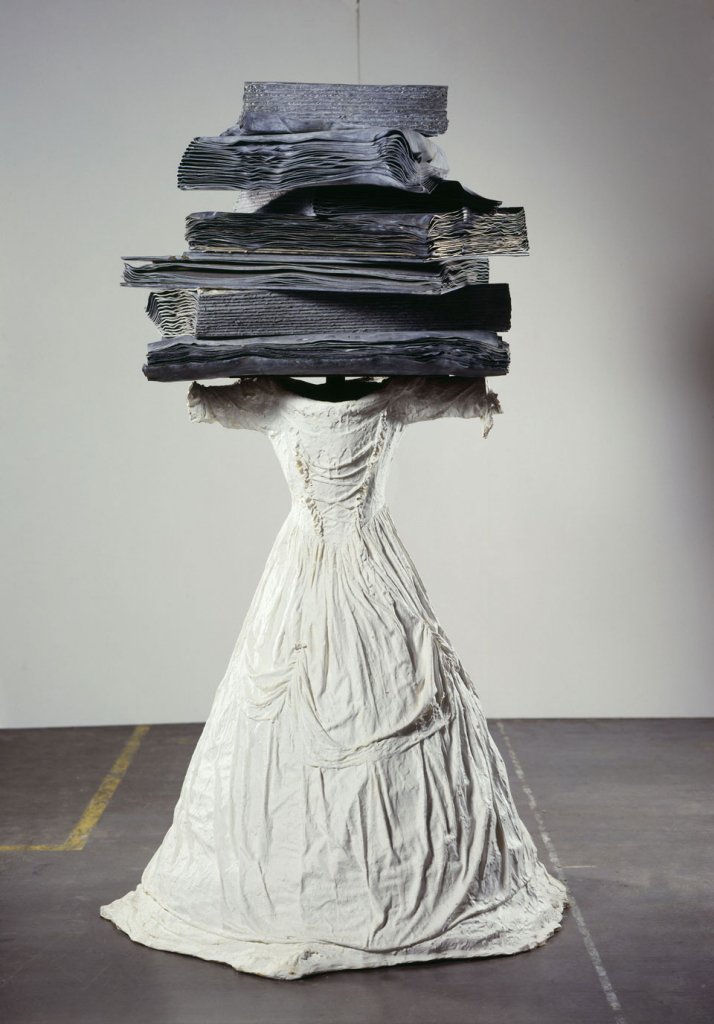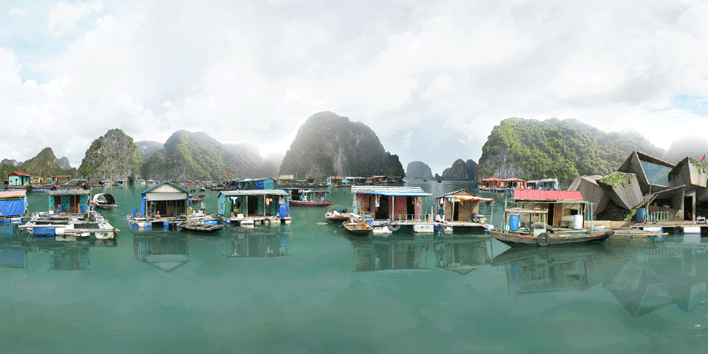
- Artist:
- Dionisio González
- Date:
- 2008
- Technique:
- Siliconised colour photograph under methacrylate
- Dimensions:
- 200 x 350 cm
- Origin:
- Es Baluard Museu d'Art Contemporani de Palma
- Registration number:
- 656
- Exposed:
- No
Since the late 1990s Dionisio González has been developing a line of work centred on architecture and urban landscapes, creating interventions based on real shots with a completely unreal composition and at the same time showing different ways of living in the city. The series dedicated to the favelas of São Paulo (Brazil) or the pile dwellings of Dauphin Island (Alabama, United States) are some of the places he documents and analyses and in which he intervenes, reflecting that precarious popular architecture that is on the point of disappearing.
In Halong (2008), which belongs to a large-format series he produced between 2007 and 2011, the protagonist is the bay of Vietnam with the same name. With his visual strategies and unprecedented recreations, he makes the impact of mass tourism in the bay visible and using digital techniques, he locates house boat inhabitants in it. The continuity of these dwellings has been threatened by fishing restrictions since the bay was declared a World Heritage Site by UNESCO.
The result of his intervention transmits the wealth and beauty of this natural setting, an apparently “friendly” composition – González does not delve into the real difficulties of the population –, which becomes a symbol of his demand that these dwellings survive, and above all strives to make the people who live in them visible. At the same time, on the right of the composition the Seville-born photographer includes an architectural design of his own, an architecture imagined by himself, construction of which is possible.
E.B.
Dionisio González has a doctorate in fine arts from the University of Seville, where he teaches. He currently lives and works in Seville. González works with different media and languages, ranging from video, light boxes and photography to architectural installations made from industrial and recycled materials.
Whilst at the end of the 1990s his works featured the human body treated on the basis of three-dimensionality and according to the panoptic concept that links with Foucault’s notion of “seeing without being seen”, at the beginning of the current decade and on trips to Havana, Rio de Janeiro, São Paulo and Halong, he was impressed by unplanned architecture, and this gave rise to works that show interesting aspects of the “architectures of the poor”, altering reality with housing typical of the developed world in physically impossible interventions.
He was awarded the European Photography Arendt Award 2013. He has exhibited at the Centro Andaluz de Arte Contemporáneo (Seville, 2000), Fundació Pilar i Joan Miró a Mallorca (2002), Fundación el Monte (Huelva, 2004), Casal Solleric (Palma de Mallorca, 2005) and Domus Artium Salamanca (2006), hmong others. He is represented in a diverse range of Spanish museums and institutions: Artium de Álava (Vitoria), Institut Valencià d’Art Modern (Valencia), Centro Andaluz de Arte Contemporáneo (Seville), Domus Artium Salamanca, Ayuntamiento de Pamplona, Centro de Arte Caja Burgos, Es Baluard Museu d’Art Modern i Contemporani de Palma and Fundació Pilar i Joan Miró a Mallorca.
E.B.
